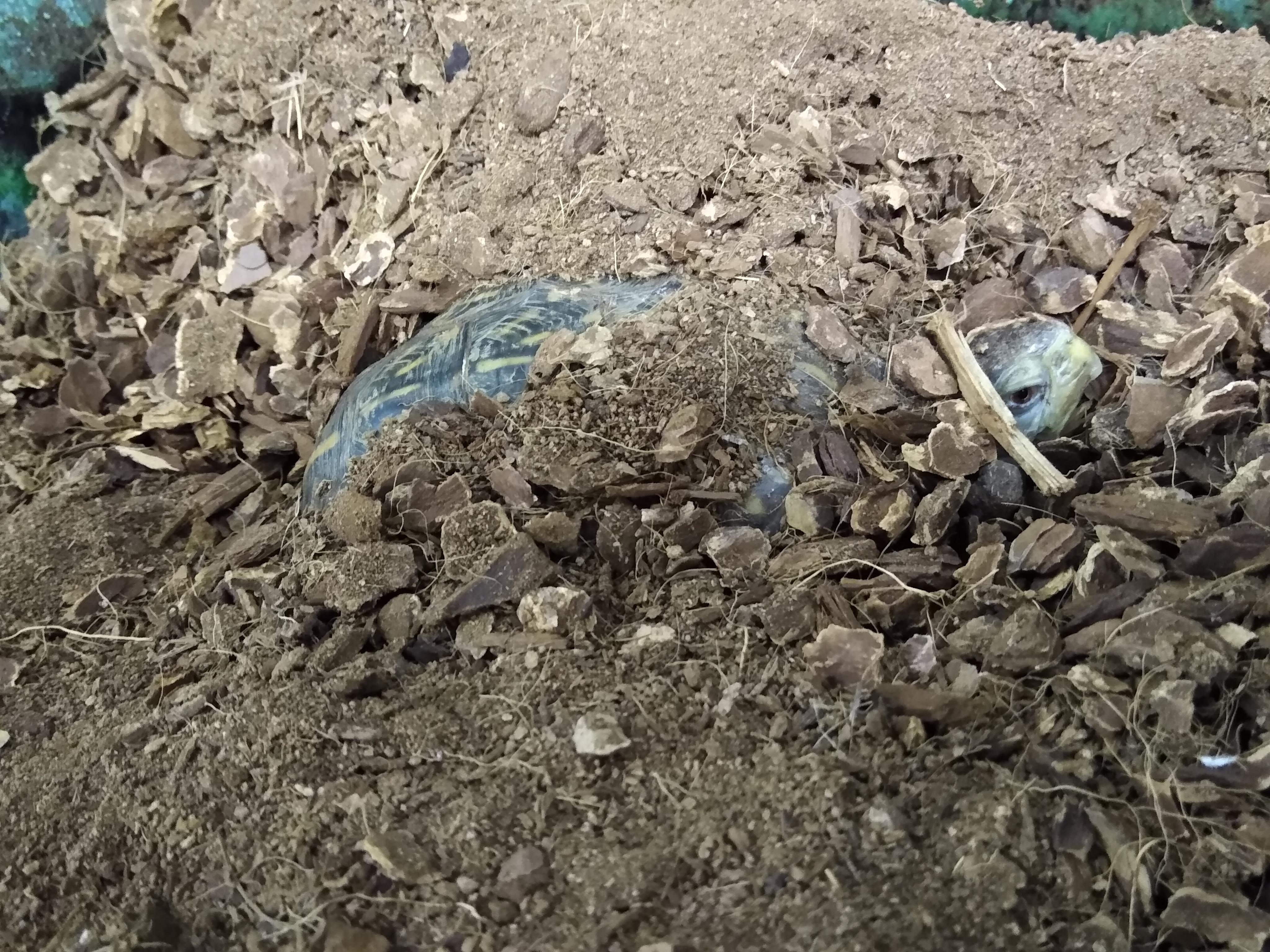Daisy and her fellow animal ambassadors will continue to enthrall our visitors throughout the winter months. However, Daisy’s wild counterparts have all begun to slow down. As cold-blooded creatures, box turtles get their energy from warmth and sunlight, something that is in scarce supply during the winter months here in Milwaukee. So what exactly do box turtles do during the winter? How do they stay alive when the temperatures drop well below freezing?
As their reputation suggests, box turtles are not speedy creatures. Compared to other animals that can fly, swim, gallop, or hop, it takes box turtles a long time to move from one point to the next. So it is not surprising that box turtles do not migrate during the winter months in order to stay in warmer temperatures. Rather, most box turtles will spend the winter in the same regions and territories they occupy when it is warmer.

Ornate Box Turtle
When the ambient temperature drops below freezing, box turtles do have the incredible ability to shut down some of their bodily functions while still staying alive! When this happens, blood is shunted to the core of the turtle’s body. Meanwhile, glucose produced by the liver is primarily sent to support the vital organs such as the heart, eyes, and brain. In extremely cold conditions, the turtle’s heart may even stop beating completely, thus making them appear to be dead. Fear not, though because they are still very much alive.
Box turtles can even withstand freezing inside of their body cavity for short periods of time. If the temperature around them drops below 17-degrees Fahrenheit, the fluids inside of the box turtle’s body may begin to freeze. Box turtles can tolerate ice surrounding their lungs, skeletal muscles, or even their brains (talk about a brain freeze!); up to 58% of the body water of a box turtle can freeze for up to 50 hours and the turtle would still be able to recover.
While these are some amazing feats of physiology, the safer and more comfortable approach to winter is to find a nice warm hole in the ground. Box turtles dig an overwintering chamber where they will generally hunker down and spend the entirety of the winter. In Milwaukee, box turtles are most likely burrowing into sandy or non-compacted soil types. They will most frequently be dug on south or west-facing slopes, which will maximize the sunlight and guarantee warmer temperatures.

Daisy, the ornate box turtle in the Menomonee Valley animal room, buried under her substrate
Using their claws, box turtles will begin digging before the substrate has frozen, allowing them to burrow down into the ground. Sometimes, the peak of their carapace (shell) will still be visible from the top of the ground; other times, they may dig deep enough into the group to be fully covered. In some cases, they may keep digging progressively deeper throughout the winter, keeping themselves protected from the increasingly harsh weather conditions. These warm winter burrows protect box turtles from the harshest of winter conditions and hopefully minimize the amount of exposure they have to temperatures that would cause their bodies to freeze.
So this winter, as you are bundling up to prepare to come visit Daisy at the Urban Ecology Center, take a moment to think about all the wild box turtles who are buried under the ground, and possibly, quite literally frozen, waiting for the warmer temperatures to return. If box turtles can survive the Wisconsin winters, surely with all of our human adaptations, these cold months won’t seem so bad after all.





